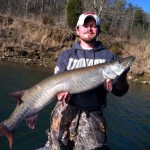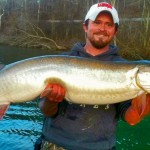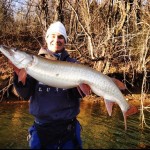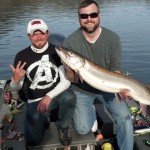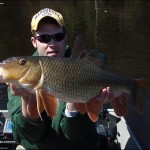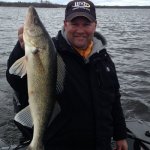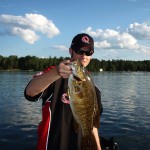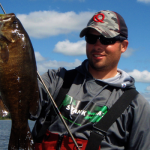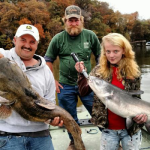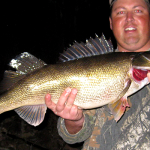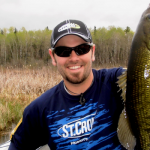By Cory Allen
In the study and execution of what it takes to successfully interact with the king of freshwater apex predators, the immediate gravitation is towards the audacious, belligerent, and the sheer violent aspects of this pursuit. Without question, there is no darker side to a Janus-personaed piscivore than the muskies rage. Yet especially in the cooler periods of the year, the emphasis remains on the boisterous, when the stealth, guile, and steeled attentiveness are the true keys to hooking into a giant musky. Let’s face it, even linebackers take ballet, and muskies are the ultimate synthesis of deadly maliciousness and the grace of an assassin.
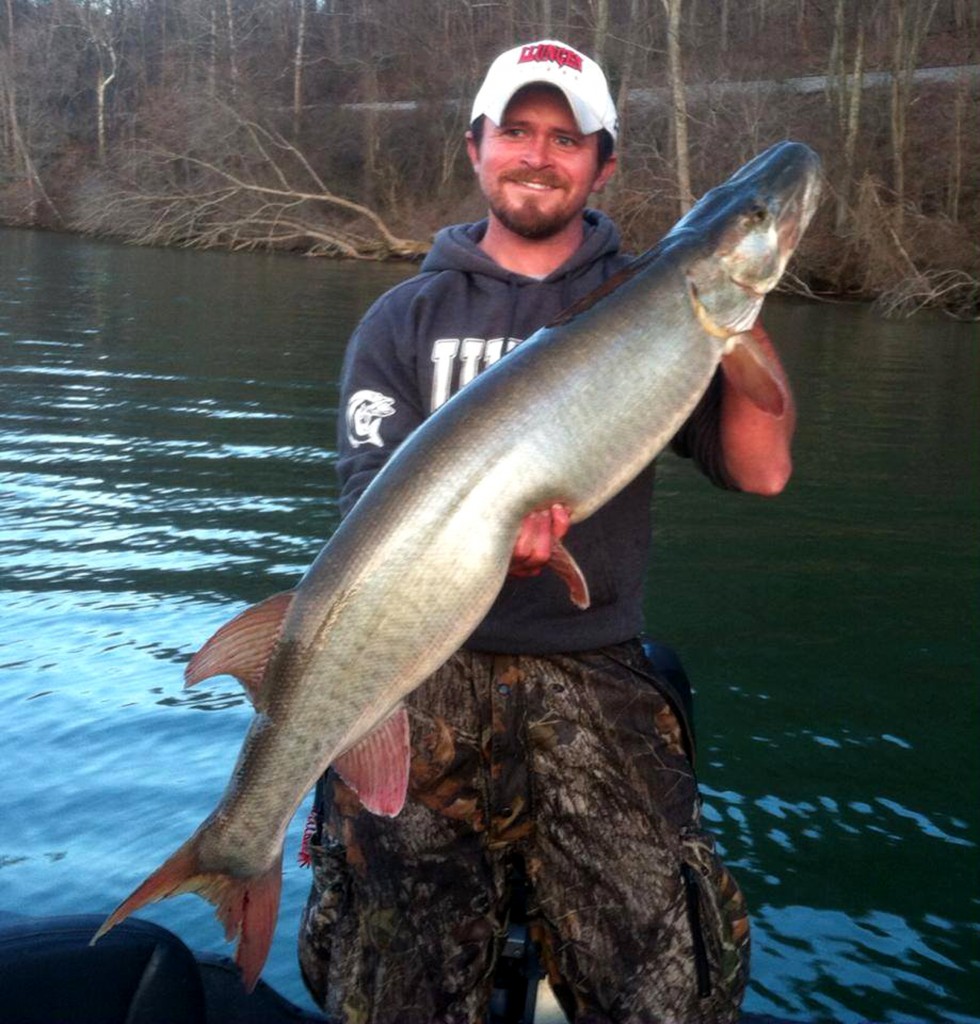 Even in the “south” of musky fishing here in Tennessee, though we do experience periods albeit brief of more summer-reminiscent reckless abandon, the majority of the time our opportunities are won and lost in the cracks of detail. Few are the absolute guide-cracking slams at the boat side, and more often are the dull grabs, almost like a senior eating sliced pear, or a slight tap sometimes indistinguishable from the days of panfishing yore. Fishing slowly, methodically, and patiently may seem tedious. But when we signed on to musky fish, we kind of relinquished our common expectations of consistent success or even validation. This is where the men are separated from the boys.
Even in the “south” of musky fishing here in Tennessee, though we do experience periods albeit brief of more summer-reminiscent reckless abandon, the majority of the time our opportunities are won and lost in the cracks of detail. Few are the absolute guide-cracking slams at the boat side, and more often are the dull grabs, almost like a senior eating sliced pear, or a slight tap sometimes indistinguishable from the days of panfishing yore. Fishing slowly, methodically, and patiently may seem tedious. But when we signed on to musky fish, we kind of relinquished our common expectations of consistent success or even validation. This is where the men are separated from the boys.
Location in the cooler months of the south becomes much more crucial as the ecosystems themselves become much more tightly retained. Predator and prey are sometimes literally huddled together in deeper water haunts, almost resolved to a temporary truce due to the Nature of the given circumstances. This is where understanding just how fine the line is between success and failure as it comes into play. If you’re often not fishing THE spot on THE spot, the fish will be almost entirely resolved to not react to a presentation of an aggressive an often times even a passive-aggressive nature like a Medussa rubber bait. Though utilized properly, such tools can trigger reaction strikes.
Passive Presentations
During this period, as a basic means of metabolic energy conservation, muskies are hard wired to rest on the bottom (and more often the rest of the year than most people realize). Understanding this and taking advantage OF it is paramount. While bottom bounce trolling can be effective at times, it is often just too fast in nature that even a reaction strike isn’t triggered. This is where selections such as Medussas, big jigs, and smaller deep diving crankbaits come into play. These tools allow presentations on and near the bottom, both with the advantage of hanging in the minuscule strike zone of a neutral negative fish during the cold water numberswiki.com
period, and being able to utilize as an evasion tool triggering reaction strikes. The Medussa, especially mid and regular sizes, can be fished and tracked closely to the bottom during cold water periods, let settled and then pulled to create a sudden speed burst with a rise in depth (both natural evasion triggers in predators) while still retaining a somewhat subtle lateral line stimulus. Bingo; a passive-aggressive cold water presentation.
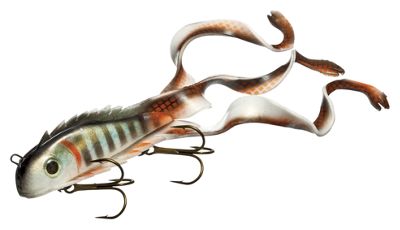 Now what about a more passive presentation for precision in these negative neutral situations? We’re talking putting the dot right on the “I” and keeping it there. What better tool for sitting and staying than that old dog the jig-and-trailer combination. Even though this tackle box standard has learned a few new tricks like swimming, standing up, and even shaking…. it still does the ol’ “sit and stay” routine better than any breed of bait, and its still the perfect tool for creeping down steep channel driven banks into winter haunts. In fact just this past week I caught a 47.5 inch, 30 pound bruiser using this very same approach.
Now what about a more passive presentation for precision in these negative neutral situations? We’re talking putting the dot right on the “I” and keeping it there. What better tool for sitting and staying than that old dog the jig-and-trailer combination. Even though this tackle box standard has learned a few new tricks like swimming, standing up, and even shaking…. it still does the ol’ “sit and stay” routine better than any breed of bait, and its still the perfect tool for creeping down steep channel driven banks into winter haunts. In fact just this past week I caught a 47.5 inch, 30 pound bruiser using this very same approach.
Even on more aggressive-passive baits like gliders and twitch cranks, this time of year it’s not uncommon to see the larger fish barely tag the back hook, while the more scrappy younger guns just tie into them full force. These bigger and albeit older animals are much more affected by the metabolic creep of the cold water on their exothermic system and often don’t have the energy to exert past a slight half-hearted tag. Being able to know how your baits feel normal and when the glide or slide is briefly delayed or interrupted can be the difference between a nothin’ or a net.
While the muskies are more than adapted to the cold, even in Tennessee where we literally can fish 365 days a year including the coldest of winter, there are definitely times where slow and steady wins the race (ironically even in the warmer water periods). The absolute awareness and attentiveness to detail, finesse, and the much more benign and graceful feeding nature of these apex predators at times during the cold water periods of the south may be tedious and often times gratingly slow, but can result in some of the more epic battles of your life with these fish at their absolute fattest body mass indexes of the year.
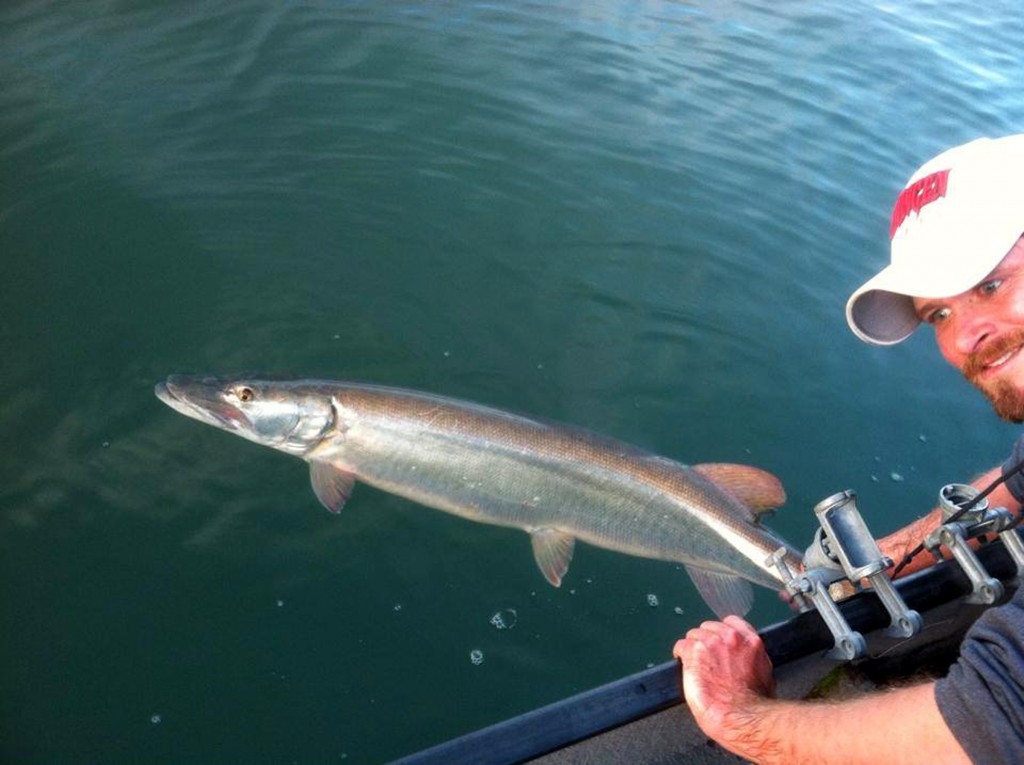
Cory Allen, 28, of Oak Ridge, Tennessee is the founder and lead guide of Stone’s Throw Adventures. Allen fishes the waters throughout Tennessee and has bested many of its musky fisheries. http://www.stonesthrowadventures.com/




